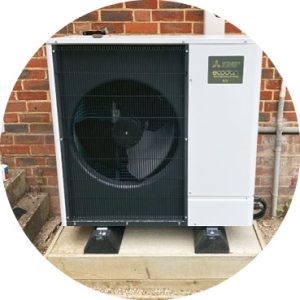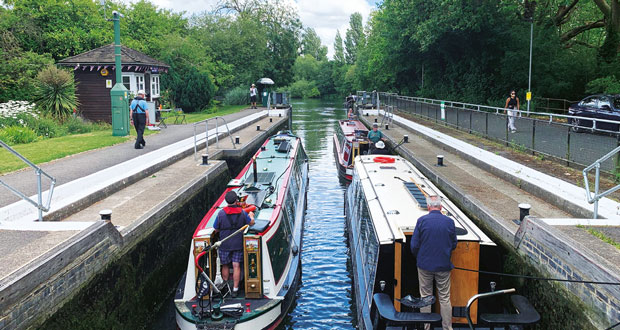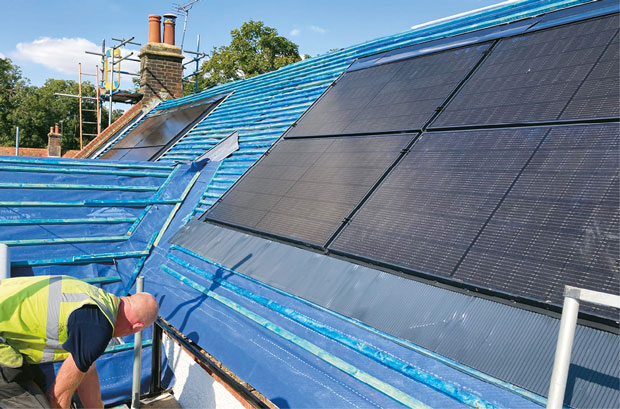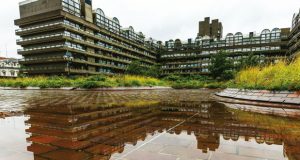PLANNING AND INVESTMENT
In 2021, the estates team successfully bid for funding to enable longer term planning and investment.
This covers:
- Sustainable Funding – to plan multiyear maintenance.
- Sustainable Operations – to reduce energy and resource use through the supply chain and invest in sustainable thermal upgrades to maintain their legal duties.
- Sustainable Outcomes – to contribute towards net zero and sustainability goals while climate proofing and protecting the asset value of the housing portfolio.
When it comes to funding, the residential property team receives revenue funding from the EA navigation team, with £792,000 this year covering 77 houses. Bids for capital funding are made in the spending review for 2024.
Explains Forster: “A couple of years ago we received £2 million for capital works, where for instance we improved heating, carrying out underpinning at some of the houses and made some roof renovations.
“It all had to be used as the need arose, so until recently we had to do a lot of fire-fighting. Now with the sustainable funding we can move ourselves into a preventative maintenance position, getting the houses into a reasonable state so we’re able to pre plan much of any maintenance.
“Our sustainable operations initiative means we’ve been able to introduce a variety of programmes, including signing a new contract to install solar panels in as many of the houses as we can. The solar panels reduce the electrical cost for the lockkeeper. The batteries then enable them to use lower cost tariffs and store up any energy so it’s a really quick win now we’ve the contract in place.”
According to Forster sustainability begins at the procurement stage, which entails ensuring that the supply chain can demonstrate their commitment to net zero initiatives.
She says: “This may range from how they manage their fleet to where they source their materials. This may require us to work side by side with a contractor to help improve their sustainable and societal contribution.”
Forster also points out that living in a lock keepers’ house is very different to an ordinary suburban house. Heating is a huge issue for these properties, as they don’t have access to mains gas. This is the case of the property we visited at Sonning Lock and associated weir, which is situated on the River Thames at the village of Sonning near Reading. The house, which was built in 1916 isn’t accessible for oil deliveries so relies on LPG, which John Irvine the lock keeper describes as painfully expensive.
“It comes in 47 kilo canisters and if we ran that heating as you would with normal mains gas, it would mean we’d go through a bottle a week. Instead, we run the heating and hot water together for an hour in the morning and an hour at night, and use a coal fire for the rest of the time.
“We also ensure we don’t leave doors wide open, so that once the place is heated we try to keep it that way. It took us a while to learn how to heat the property, but it’s still expensive.”
Forster adds: “We’re also looking at an air source heat pump which will not only be efficient, by cutting the need for LPG deliveries but will be run much greener. The cost of heat pumps come in at between £10,000 and £15,000 per house, which includes changing the radiators and installing under floor heating.
“We did look at installing water sourced heat pumps but these came in at around £45,000 and stats on how they perform aren’t convincing. At the 10-15,000 mark we’re removing the need for deliveries and making the heating more efficient, which is better too for the fabric of the house to reduce damp, so it’s all a virtuous circle.”
 A huge development at the Sonning house has been the installation of solar panels in July 2023, which according to the occupants has already helped cut the heating bill by around 30 per cent.
A huge development at the Sonning house has been the installation of solar panels in July 2023, which according to the occupants has already helped cut the heating bill by around 30 per cent.
An air source pump has already been installed at Cleeve lock house in Oxfordshire, which is accessed down a one-mile track and across lock gates and previously relied on oil fuelled heating. Along with the installation of an 8.5kw Mitsubishi Air Source Heat Pump came a new pressurised hot water cylinder with an additional immersion that can be connected to provide free hot water once the solar panels are installed. Twelve new double radiators have replaced the old, pressed steel single panel radiators. Should the water levels increase with a changing climate, the heat pump has been installed on a 200mm raised base to reduce the possibility of flood damage.






